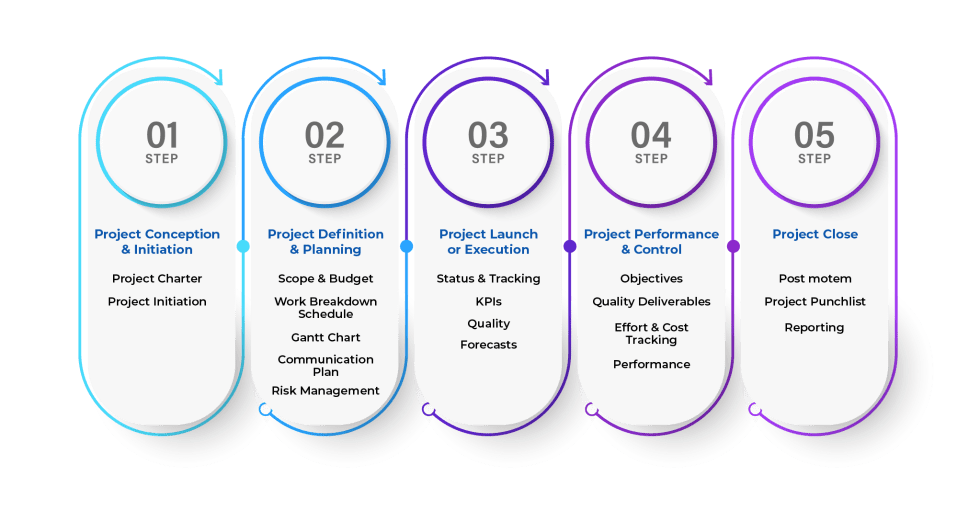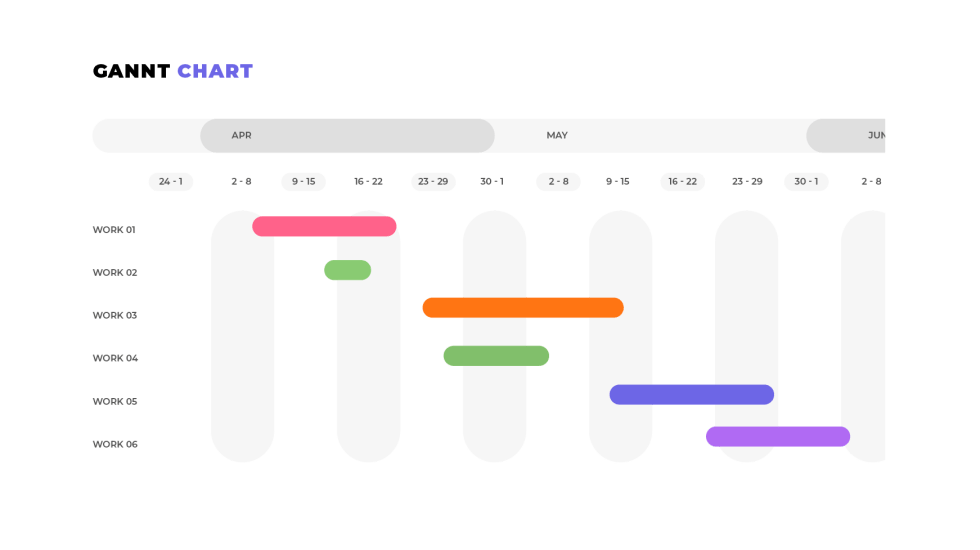Project Management Guide
Project Management Guide
What Is Project Management?
What Is a Project?
Why Is Project Management Important?
Project Life Cycle Phases
- Project Initiation
- Project Planning
- Project Execution
- Project Monitoring
- Project Closure
Project Management Methodologies
- Waterfall Project Management
- Critical Path Method
- Critical Chain Project Management
- Agile Project Management
- Scrum Project Management
- Kanban Project Management
- Lean Project Management
- Six Sigma Project Management
- PRINCE2
- PRiSM
- PMBOK Method
Project Management FAQ
What Are Project Management Processes?
How to Understand and Execute Project Management Processes
Be it the working of an organization, the actions of a computer program, or the chain of a chemical reaction, they all involve processes. Naturally, processes are important in project management, too.
Every project, no matter what its size or nature, can be seen as a series of processes. A process itself can be defined as a series of linked actions that bring the overall project a step closer to completion.
The Project Management Institute also refers to these processes as phases. In this piece, we’re going to discuss:
- The Five Basic Processes
- Managing Processes
- Tools to Track Processes
All the project processes taken together constitute what’s referred to as the life cycle of a project. The life cycle is a summation of the work to be done, the deliverables, deadlines, and reviews, the people involved, and the system of approvals and management.
It all starts with a proper understanding of the processes.
The Five Basic Processes

According to the Project Management Institute’s Body of Knowledge, which is a standard guide to project management, the five processes are initiation, planning, execution, monitoring, and closure. These processes cover the entire project, from start to finish.
Project Initiation
This is the starting point. In the beginning, the project has to be broadly defined, and the feasibility and business parameters considered.
Due diligence should be carried out, and senior stakeholders consulted for their views and input.
If the project is green-lit, the next step in this process is to document the purpose and requirements of the project in a project brief or charter. This is a broad overview of goals and requirements.
Subsequently, some project managers conduct an initial or kick-off meeting with all parties concerned to go over agreed goals and lay out the road ahead.
Project Planning
Now comes the planning of the project. All the variables and fixed elements to do with the project must be considered at this stage. These include costs, risks, resources, and deliverable timelines.
This phase can be seen as the roadmap for the project, which conveys to all team members their roles in reaching the destination. The work is broken down, responsibilities assigned, and deadlines decided. Another important aspect at this stage is to determine the scope of the project.
Project Execution
In this phase, the rubber meets the road, and the actual work begins. Updates, course corrections, and performance reports are an important part of this process.
It starts with resources being allocated and continues on to the management of teams, procurement, status reports, and progress parameters.
Risks should be flagged early, and an eye kept on the scope of the project so that it does not spiral out of control.
Project Monitoring
Though this is seen as a separate process, it, of course, overlaps with the execution phase. During this process, the project has to be constantly monitored to ensure that it is on track.
Various systems of monitoring are used, depending on the nature of the project. Overall, the time, cost, and scope have to be kept an eye on.
Quality is also an important aspect. The pre-established standards and assurances should be adhered to.
In terms of individual performances from members of the team, these can be monitored by a system of KPIs. Changes and deviations can be discussed and agreed to, with the cooperation of all concerned.
Project Closure
This is the final phase, in which work is signed off. An evaluation is carried out, with assessments of what went wrong and what was accomplished successfully.
Final project reports are prepared, and budgets calculated. The handover of deliverables is carried out, with the requisite approvals and documentation.
In order to keep morale high and to create a community spirit, many project managers also hold small meetings with team members in which performance is praised and lessons drawn for the future.
Methods of Managing Processes
In process management, the emphasis should be on the actionable steps being taken to achieve agreed objectives in each phase.
During project initiation, all the documentation should be in order. If there are studies on investment and returns, for example, the paperwork for this should be completed. Then, there’s the project charter, which lays down the parameters and objectives, as well as the information on resources and the KPIs for the teams.

In the project planning phase, the project should be broken down into tasks, which lead up to the deliverables. Overlaps and dependencies should be considered and planned for, and priorities assigned.
Then come budget estimates and estimation and distribution of resources for the tasks.
Three other aspects that are important in this stage are 1. An assessment of risks and alternative plans, should the need arise; 2. A clear communications structure, both for team members as well as key stakeholders; and 3. A project schedule, so that it is clear at a glance what the progress is and what the bottlenecks are, if any.
Now comes the all-important execution phase. Project managers have a variety of methods to manage this, depending on the type of project and their own prior experience.
In general, reporting systems should be in place, with clear lines of communication and responsibility. Schedules and budgets should be adhered to, and changes to the plan should be carefully considered.
The goals and priorities laid down earlier should be reviewed as the project progresses, along with the deadlines, so that the project stays on track from beginning to end.
In terms of project monitoring, the actual progress and schedule of the project should be constantly checked against what was agree to earlier. Clearly, timelines, KPI and quality metrics, and deadlines are critical.
It’s also important to monitor and regularly review not just the project scope but also the utilization of resources and budgets. This way, any issues can be dealt with early on.
Finally, in the project closure phase, the deliverables need to be checked against the desired output. Handoffs need to be carried out, and approvals from all concerned need to be provided.
All the documentation should be in order, and final meetings should be carried out in terms of review as well as lessons learned that will come in handy for future projects.
The Tools to Track Processes
There are a variety of tools that project managers use to track project processes. These can be sequential, they can be agile, they can make use of smart sheets and graphs, and they can involve software to track progress.
Some of the most often used tools are:
Gantt Charts, which show you tasks and timelines at a glance. You can set milestones, make changes, and even link dependent tasks for a proper overview. Clearly, this can be helpful during all the project processes

Project dashboards, which compile project elements such as resources, tasks, workload, and so on, to give an overview of the project. This is useful for updates in a non-granular sense as well as a way of keeping a check on project progress.
Task lists and calendars, which can be used separately or combined as a way of checking the over dimensions of a project and how well it is progressing towards the deadline. These can be further broken up into subtasks and deliverable deadlines for an even more accurate representation.
Kanban boards, which are an effective and common visual representation of the project. There are separate sections for the overall production cycle and the tasks under them. It is a transparent and focused way of checking scheduling, execution, and completion.
Web-based collaboration tools, which are extremely helpful when team members and tasks are spread over different locations. These can ensure that everyone is on the same page, with status reports and task updates, among other things, in real-time.
Similarly, there are resource management tools, online timesheets, task management software and others like these which make the task of managing project processes simpler.
It should be kept in mind that the above tools are not a substitute for effective planning and working out the rest of the project processes. They are resources for professional execution, through which assessing, planning and monitoring can be carried out.
These are the processes that guide project managers from the start to the finish of any project. The details may vary depending on the simplicity or complexity of the project tasks, but proper initiation, planning, execution, monitoring and closure are key steps.
